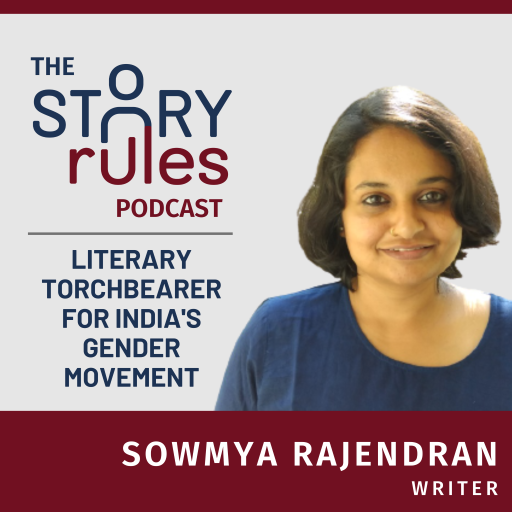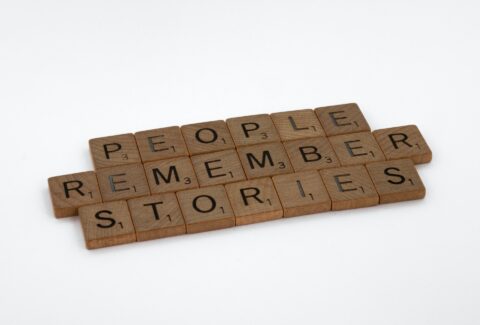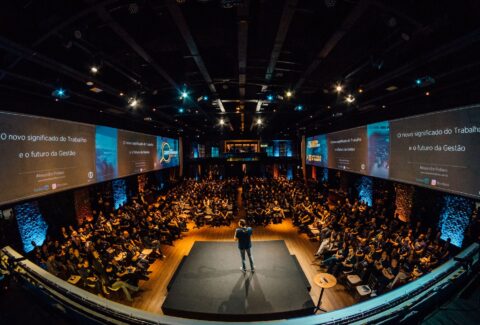E05: Sowmya Rajendran: A Literary Torchbearer for India’s Gender Movement
Why should girls need rescuing?
“So I used to tell her these fairy tales also, like Cinderella and Rapunzel and somehow when the story got to the part when Cinderella had to be rescued or Rapunzel had to be rescued, I would find myself changing the story because I didn’t like it. I didn’t want my daughter to grow up thinking that she needs to wait for some boy to come and rescue her and that she is going to be this passive person who doesn’t take charge of her life...”
That is Sowmya Rajendran, a brilliant, thoughtful writer who I would describe as a literary torchbearer for the gender movement in India.
I came to know Sowmya first through her children’s books – which by the way, pack in a world of meaning in them. For instance, take her book, “Girls to the Rescue”. In this book, Sowmya overturns the typical ‘damsel in distress’ plotlines of most fairy tales. Instead, the girls in her stories are smart, independent and take charge of their own lives.
Later, I read some of her interpretations of the depiction of gender in cinema and how that is changing – ever so gradually – especially in south Indian films. (She frequently writes on cinema with a focus on the depiction of gender – for ‘The News Minute‘ online publication). For instance, check out this richly analysed, nuanced review of ‘Drishyam 2’, the Malayalam superhit sequel to the original blockbuster.
Finally, I read Sowmya’s only adult fiction novel – The Lesson (published in 2015) – a scathing indictment of the patriarchy deeply embedded in Indian society.
The Lesson is a darkly satirical tome, and represents, for me, the 1984 moment of India’s gender movement.
In the book, Sowmya paints a dystopian totalitarian future where masculinity and hyper-patriarchy have been taken to their extreme logical conclusion. It’s an absurd, deeply disturbing, and unfortunately, not entirely implausible tale.
It’s a book that should have gotten more attention.
As I was reading through Sowmya’s writing (and connected it with the section on patriarchy in Yuval Harari’s Sapiens), I had a realisation.
We live in a world divided by nationality, religion, language, customs… but having one unifying theme: Patriarchy.
While massive strides have been made in the past several decades in the gender rights movement, the underlying patriarchal mindset – which is several millennia old – will not be easy to change. (As a comparison, the book 1984 came out in 1949. It took forty years after that for Communism to be officially declared a ‘failed’ system, with the fall of the Berlin Wall in 1989 and the collapse of the Soviet Union in 1991).
Thankfully, in the long struggle for gender rights, we have leaders like Sowmya who are putting in their unceasing, fearless and most importantly, creative storytelling efforts … in bending this long arc of the moral universe towards fairness and justice.
More power to you Sowmya!
The Podcast conversation
In this conversation, Sowmya talks about her atheist upbringing, the early reading and writing influences, the seminal impact of her years at Stella Maris College and the unique literary vehicles she has chosen to share her stories.
Here are some extracts from the 3Ps – the Personal, Philosophical and the Practical – from the discussion. (All emphasis mine):
1. Personal:
Sowmya talks about how the idea for ‘Girls to the Rescue’ was born when she was telling stories while feeding her child:
Sowmya: “If you look at the conventional fairy tale the women always hate each other, the stepsisters are squabbling the stepmother is cruel. So the father is conveniently dead, or he doesn’t intervene. He doesn’t intervene but he’s never judged for it. So the women are always competing with each other over the beauty and over the attention of a man, and I didn’t want my daughter to grow up with this, so I thought okay, let me try rewriting this so that’s how ‘Girls to the Rescue’ was born”
I loved how Sowmya’s gender storytelling senses are always ON.
Even when feeding her child, she was cognizant of what kind of stories she is telling her. And often these stories have seeped so deep into our consciousness that we look at them as harmless tales to be passed on from generation to generation, without questioning the subtle impact it may be having on young minds.
2. The Philosophical:
Some great points here.
The first one, on how for a writer, all of life is material!
Sowmya: “So I tell my students, you know, when I teach creative writing, I tell them all the time that for a writer, life is your material, everything that happens to you is material. So, any conversation you have, any person you meet. So even when something horrible happens to me, one part of my brain is thinking okay how can I use this. So you become that kind of, you become hungry for material, and then you’re waiting for it, then when you are expecting it, then it comes to you. So my parents, whenever one of my new books is out they read it very eagerly, not because they love my writing so much, but because they want to see okay, I know, we know that this girl would have put something you know about us, we want to find out…”
That was hilarious.
Two, Sowmya talks about how to channelise your emotions into your writing.
Ravi: “So when you’re talking about this Sowmya, you’re so cheerful and you’re so relaxed about it. But in your writing. I can sense that it was actually disturbing… It’s amazing how you channelise that emotion into your writing… Does it actually affect you (personally)?”
Sowmya: “I think for me writing is a coping mechanism, like I said, you know, I write to make sense of what’s happening around me so I think a lot of artists are like that, you know, whether it is painting or music or art, they find a way to channelize the darker emotions and feelings that they have into creating something. And when you do that said I think the work is always more honest than what it could be because you’re allowing yourself to be vulnerable and you’re allowing the reader to see those emotions, you know, and I think that makes the work more relatable, more immediate to them than if you were to disguise that. I think a lot of women writers tend to self-censor themselves because they’re always worried about what if somebody in my family reads this what will they think about me. And can I have nudity in my book and can I have this, can I have that. And I think you have to break past that wall in your mind and …. It’s only when you allow the world to see that they can, they know they see the value in your world.”
Another great point was how Sowmya talks about the truths that are all around us, but are either ignored or taken as a ‘normal’ part of life:
Sowmya: “It is been shown repeatedly that over 90% of violence that women experienced comes from their own families. It’s from your own immediate social circle that you are at threat, and it is not …some man who comes from outside, who’s the real danger… So, that is what I wanted to do with this book. Talk about how patriarchy isn’t something that just exists out there, but it is there, all around you.”
She also adds how she created characters in the story of ‘The Lesson’ to mirror bizarre real-life instances: “So you know that the (character of the) brother-in-law – he works as a dupatta regulator in a university… So actually you know there are colleges like this in Chennai, where they have security guards in engineering colleges who go around telling women that they’re not wearing their dupatta properly, they’re not dressed properly, they can fine you for it”
Disturbing yes, but powerful storytelling.
To me this is a good example of finding the norm and variance, a storytelling concept that I have written about. Here’s what I said to Sowmya in the conversation:
“I wish more people would read (the book) to just know what the absurdities that we have gotten used to in our life … So in storytelling I have this concept, Sowmya, of Norm and variance which is that ‘what attracts our attention is if it is above and beyond the typical norm that we ascribe to it’. This is actually a very simple thing that works in all kinds of stories. So for data stories I’ll just take a very mundane example, if your sales has been growing at 10% every year and this year also grows at 10%. That’s the norm, that’s nothing great. But if suddenly this year it grows at 40%, that will raise eyebrows… people will take notice.
What’s happened in society, is that the absurdities against women have been on for so long, for centuries and millennia, that our norms have all shifted … So if somebody says hey there’s a guy who’s moving around in buses and checking for whether the dupatta is pinned right, we almost like take it like “haan, thik hai” you know… okay we’ll adjust to it alright… So, our norms have become so warped, that things like these, which should shock us don’t… don’t even surprise us anymore. So, for me I think this book does a great job of resetting that norm that you know ‘this is not the norm’. This is not where it should be. You should be getting shocked by this day in and day out.”
3. The Practical
Sowmya reviews a lot of films, and I was curious to know how she does it – does she take notes as she’s watching etc:
Sowmya: “I hate taking notes when I’m watching a film. I just cannot stand people who take their phones out and are typing and I know that there are some reviewers who do because they’re so worried about whether they will forget to say something… (but) they are actually missing out on what’s happening right there. I feel it’s also unfair to the director because you’re not allowing yourself to be absorbed by the story. So what I do is during the interval, I take quick notes on what I watched in the first half, any points that I feel must be written or sometimes if I’m watching a really ridiculous film then if there’s a good joke that comes to my mind and I note it down so that I don’t forget it because my memory is really bad these days and you know I don’t want to lose a good joke so I write such things down. And, yeah, after I’m done with the film I do the same with the second half, so I just jot down these things as a draft on email and then I sit and I write it up. That’s it, I don’t take notes in between a film”
A fascinating conversation.
Finally, three things that stayed with me from the conversation:
1. How as a writer, everything that happens to you is material
2. How Sowmya channelises her anger (and other emotions) into her words
3. The importance of not accepting the status quo and challenging long-held norms – but doing so in an evocative, engaging way
Enjoy my conversation with Sowmya at your favourite podcast location:
Browser
Podcast apps: Apple Podcasts | Spotify | Google Podcasts | Stitcher | Podcast Addict | Pocket Casts
Happy listening!
If you find this content valuable, please rate and review this podcast on iTunes, Spotify, Google Podcasts, or wherever you listen to them. It’ll help others like you discover these insights!
This podcast was hosted by me, Ravishankar Iyer. Transcript editing by Sanket Aalegaonkar and Prahlad Viswanathan. Audio editing by Kartik Rajan.
Thanks
Ravi








